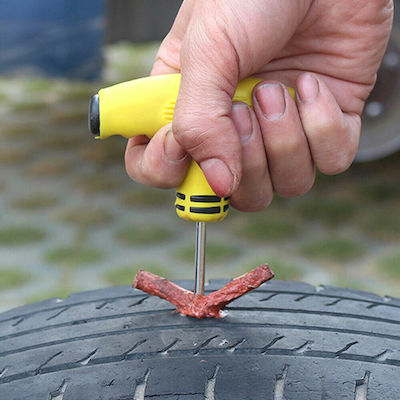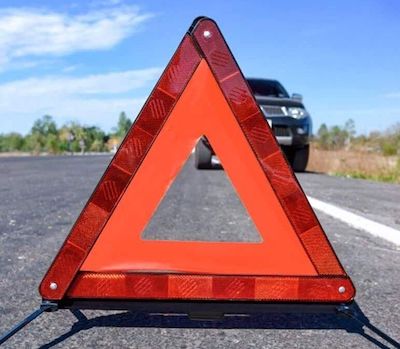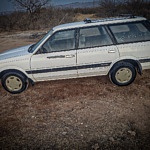Contents
How Do Nails Get in Car Tires?
Most drivers find a nail in the tire and wonder how it got there in the first place. This is an important question, as it can help prevent tire punctures. Most nail punctures come from these situations.
- Driving on the road shoulder. Nails and other debris litter the sides of the road. If you veer off or pull over, there’s a higher chance of puncturing the tire.
- Driving behind other vehicles. If you follow too closely, your tires can come in contact with debris. Keeping a little extra distance can prevent running over nails kicked back by other vehicles.
- Driving in construction zones. If you are traveling down a road under construction, there’s a higher chance of coming in contact with nails, screws, and other debris.
Symptoms of a Nail in Tire
How do you know that there’s a nail in the tire? A couple of common symptoms occur after a puncture happens.
- Low tire pressure. There’s usually a puncture when air keeps seeping out of the tire. As the hole gets bigger, the tire will lose air more quickly. However, not all nail punctures cause air to seep, especially if the head of the nail is sealing the tire.
- Clicking noise while driving. As the tire rotates, you may hear a slight clicking sound when the nail taps the road. This sound will speed up or slow down depending on how fast the tire is turning.
- Visual inspection. With no other symptoms, a visual inspection may provide the first indication of a nail in the tire. If you check the tire pressure monthly, it’s also an excellent time to look over the tread. Examine the surface for any damage.
- Soap test. If you think there’s a nail in your tire, you can try the soap test to find it. Spray down the tire with a soap and water solution. If air is escaping from the tire because of a nail, the surface starts to bubble, making it easier to find the location of the damage.
When Is a Tire Repairable?
Not all tire punctures are repairable.
- Tire puncture must be a half-inch away or more from the tire tread edge where the steel belts are.
- Tire puncture must be smaller than a quarter inch (6 mm) to be repairable.
- The tire repair can’t be in the same place as a previous patch or plug.
You should replace the tire if the puncture is too close to the sidewall or steel belts. The same is true if the hole is too large or the shape is irregular. Slices or cuts in the tread should not be repaired. Additionally, if the puncture damages the steel belts inside, the tire is unsafe to drive.
You can’t overlap a new repair on top of an old one. If you’ve already filled a nail hole in that spot, tire strength is compromised and it must be replaced.
Additionally, you should never use a tire patch alone. A plug and patch should always be used together to fill a puncture hole correctly.
Options for Repairing a Tire with a Nail In It
You have four primary repair or replacement options for a nail puncture.
Professional Tire Patch
Most people have professionals repair the tire. This is the best option if you are still trying to figure out what to do or want a second opinion. A tire patch is repaired from inside the tire, so you have to remove the tire from the wheel. Most shops charge about $25 per puncture hole if the tire is repairable, so it’s a reasonably priced repair.
 DIY Tire Plug
DIY Tire Plug
A tire plug is installed from outside the tire, so the tire can stay on the wheel. While plenty of tire plug kits are on the market, some people don’t have enough experience to follow the proper safety protocols. If you don’t install the plug correctly, all the air can come out of the tire while driving, leading to serious safety concerns. Considering the cost, having a professional perform the repair could be the better option.
Shop now for tire plug kitsFix-a-Flat
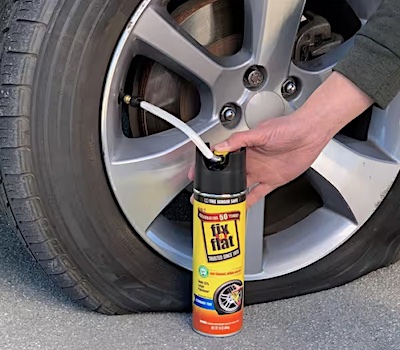
Only use these fixes if you plan to replace the tire anyway or if you need to get to the tire shop quickly for a replacement. Always tell the tire shop technician if you’ve used tire sealant before they begin to work on your tire, as it can make a huge mess when they dismount the tire.
Shop now for Fix-a-FlatTire Replacement
In some cases, a tire replacement is necessary. If driving on the patched tire is unsafe, professionals will recommend replacing it. Depending on the condition of the other tire on the same axle, you may need to replace them both at this time.
How to Repair a Nail in a Tire
If you choose to repair the tire yourself and it meets the above requirements, here are the steps to follow.
- Purchase a tire repair kit that includes the tools and a plug.
- Spin the tire to find the nail. Wait to pull it out until you have organized all the tools to fix it.
- Use vice grips, pliers, or a claw hammer to remove the nail. If it’s a screw, you may be able to get it out with a screwdriver or drill. Air will come out. Don’t be alarmed; you will refill it after it’s plugged.
- Ream the hole with the file that’s included in the kit. Push it into the hole and back out a few times.
- With the hole reamed, you can plug it. Thread the plug through the needle side of the tool and insert it into the hole. Push it down until you only see a small portion of the plug sticking out.
- Yank out the plug tool so the plug remains in the hole.
- Trim off the plug end, getting it down as closely as possible to the tire surface.
After you plug the hole, refill the tire to the appropriate psi. Spray soapy water on the repair to see if air leaks out. If no bubbles form, it’s sealed correctly.
Is It Safe to Drive With a Nail in Your Tire?
You may be able to drive a short distance to the tire shop to have the hole repaired. However, you should never continue driving on a punctured tire. It’s not safe.
Additionally, you should always follow the recommendations of a professional. As with tire sidewall repair, it can be dangerous to repair certain types of tire damage. If fixing the puncture is unsafe, you should replace the tire.


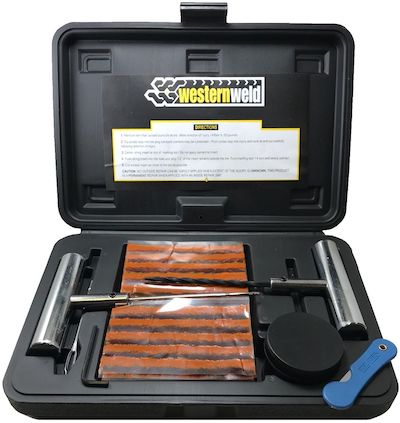 DIY Tire Plug
DIY Tire Plug